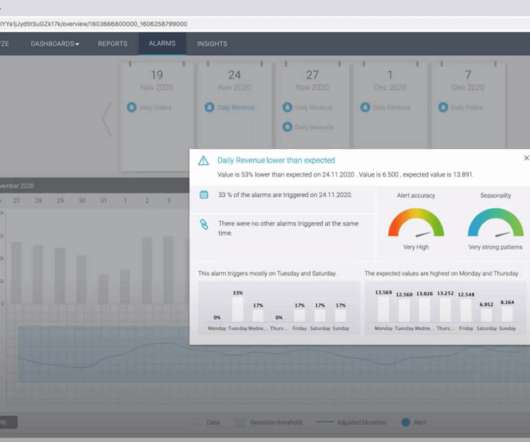Your Modern Business Guide To Data Analysis Methods And Techniques
datapine
MARCH 25, 2019
Trimming the informational fat is one of the most crucial methods of data analysis as it will allow you to focus your analytical efforts and squeeze every drop of value from the remaining ‘lean’ information. Build a data management roadmap. Data Analysis In The Big Data Environment.














Let's personalize your content